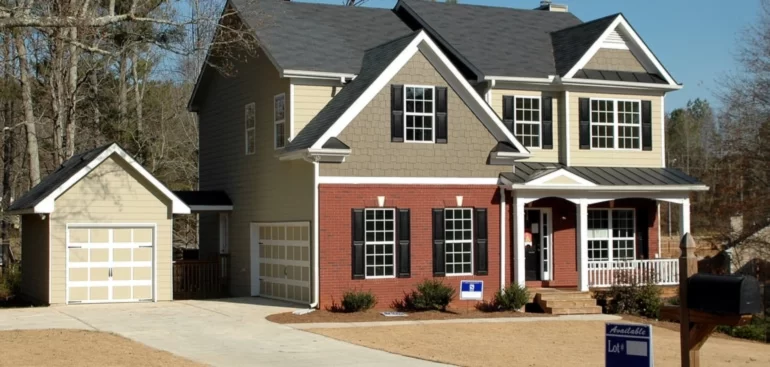According to the S&P CoreLogic Case-Shiller national home price index, home prices grew 19.8% year over year in February, up from a 19.1% yearly gain in January, and is the index’s third-highest reading in its 35-year history.
The cities in the Sun Belt continued to enjoy the most growth. The 10-city composite annual growth increased to 18.6% in March, up from 17.3% the previous month, while the 20-city composite was up 20.2% from 18.9%. Annual home price increases of 32.9%, 32.6%, and 29.7% were recorded in Phoenix, Tampa, Florida, and Miami. The minor price increases were in Minneapolis, New York, and Washington, D.C., though they were still in the double figures.
“As we move through the spring housing market, we are seeing clear signs of cooling demand. Many buyers are deciding to take a step back and re-evaluate their budgets and timelines,” said George Ratiu, manager of economic research at Realtor.com. Realtor.com calculates the monthly payment for a median-priced property financed with a 30-year loan is $550 greater than a year ago, a 46 percent rise.
Housing Market Predictions For 2022
The property market has been a whirlwind for potential purchasers, and 2022 will not provide much relief. Mortgage rates are rising at their quickest pace in over 40 years, and growing prices and rising mortgage rates are already putting off would-be homebuyers.
Danielle Hale, Chief Economist of Realtor.com, outlined the obstacles and possibilities that purchasers would encounter shortly:
Buyers will have limited options: Although it lags, the number of homes for sale has already exceeded its seasonal low. She also mentioned that homes for sale are selling fast.
Rising rents hurting first-time buyers: Due to the rising cost of necessities, first-time buyers don’t see their home equity, as well as wealth, grow. Right now, there is an increased “motivation to get into a home and lock in housing costs to prevent having to pay higher future rents,” Hale said.
The housing market will cool – but slowly: Prices and the rate at which properties are put under contract will slow as fewer sales and more sellers bring more balance to the market. Nonetheless, “the intensity of the imbalance, driven in part by a decade’s worth of under-building, could mean that the housing market cools slowly,” she continued.
In Welcome News for U.S. Home Buyers, Bidding Wars Are Showing Signs of Easing
After months of bidding wars, property buyers in the U. S. saw less competition in March as mortgage rates soared. A Redfin report released Monday indicates that 65% of home buyers faced competitive offers compared to 66.7 percent in February. Even though the drop in competitiveness was not significant, it was the first time it had happened in six months.
“Most homebuyers are still encountering bidding wars, but competition is beginning to cool because surging mortgage rates and home prices are prompting some Americans to back out or put their buying plans on hold,” Daryl Fairweather, Redfin chief economist, said in the report.
The effects of the recent increase in mortgage interest rates are expected to be felt in the following months. Bidding wars occurred in nearly three out of every four townhouses sold in March in the United States, making townhouses the most competitive property type. Single-family homes were followed by multi-family structures, which received 68.1 percent, and condos and co-ops, 62.6 percent.
First-Quarter New-Home Sales Revised Upward, But March Figures Take Tumble
According to the U.S. Census Bureau and the U.S. Department of Housing and Urban Development, new single-family home sales fell 8.6% from February to 763,000, a sharp decline from February’s pace.
Rising interest rates, quick housing price hikes, high inflation, poor supply, and geopolitical uncertainty all stifle affordability and hamper sales during the month. Even with the lower estimates, experts polled by Reuters projected an annualized pace of 765,000 units, indicating that the March figures were disappointing. However, sales projections for the prior three months were revised upward, bringing 131,000 units.
The 10.2 percent reduction in new-home sales in the South was mainly responsible for the drop in new-home sales between February and March. Although the number of new homes for sale increased at the end of March, for-sale inventory remains a concern nationwide. At 407,000 homes, this figure was up 3.8 percent from the previous month, implying a 6.4-month supply at the current sales pace. Material shortages are also driving up new-home prices. In March, the median price of a new home rose 3.6 percent month over month and 21.4 percent year over year to $436,700.
Next week’s potential market-moving reports are:
- Monday, May 2nd – Construction Spending
- Tuesday, May 3rd – Job Openings, Quits
- Wednesday, May 4th – Employment Report, ISM Services Index, FOMC Statement
- Thursday, May 5th – Initial Jobless Claims, Continuing Jobless Claims
- Friday, May 6th – Unemployment Rates, Average Hourly Earnings
As your mortgage and real estate professional, I am happy to assist you with any information you may need regarding mortgage or real estate trends. I welcome the opportunity to serve you in any way I possibly can. Please feel free to reach me at (800) 216-1047.

